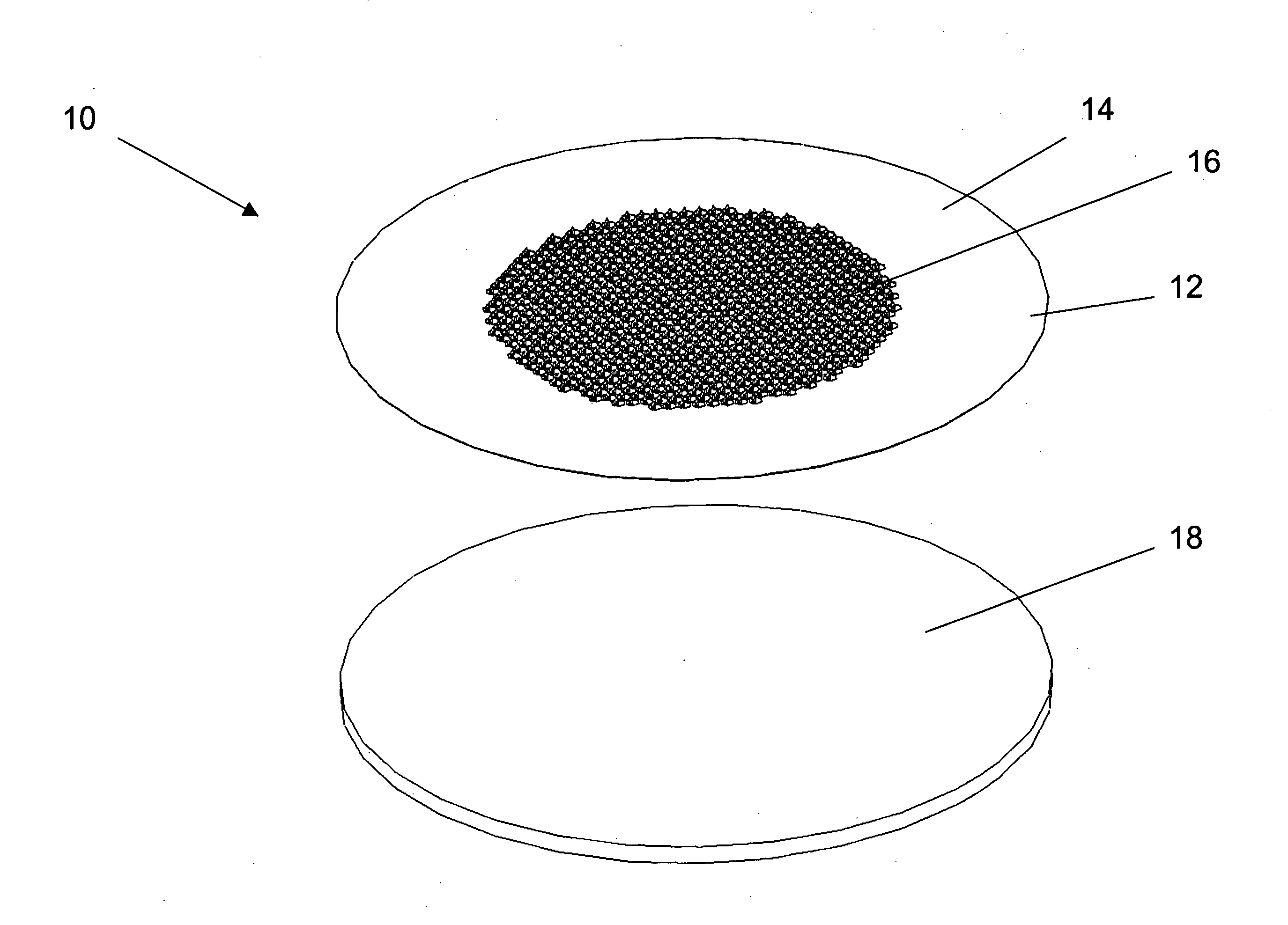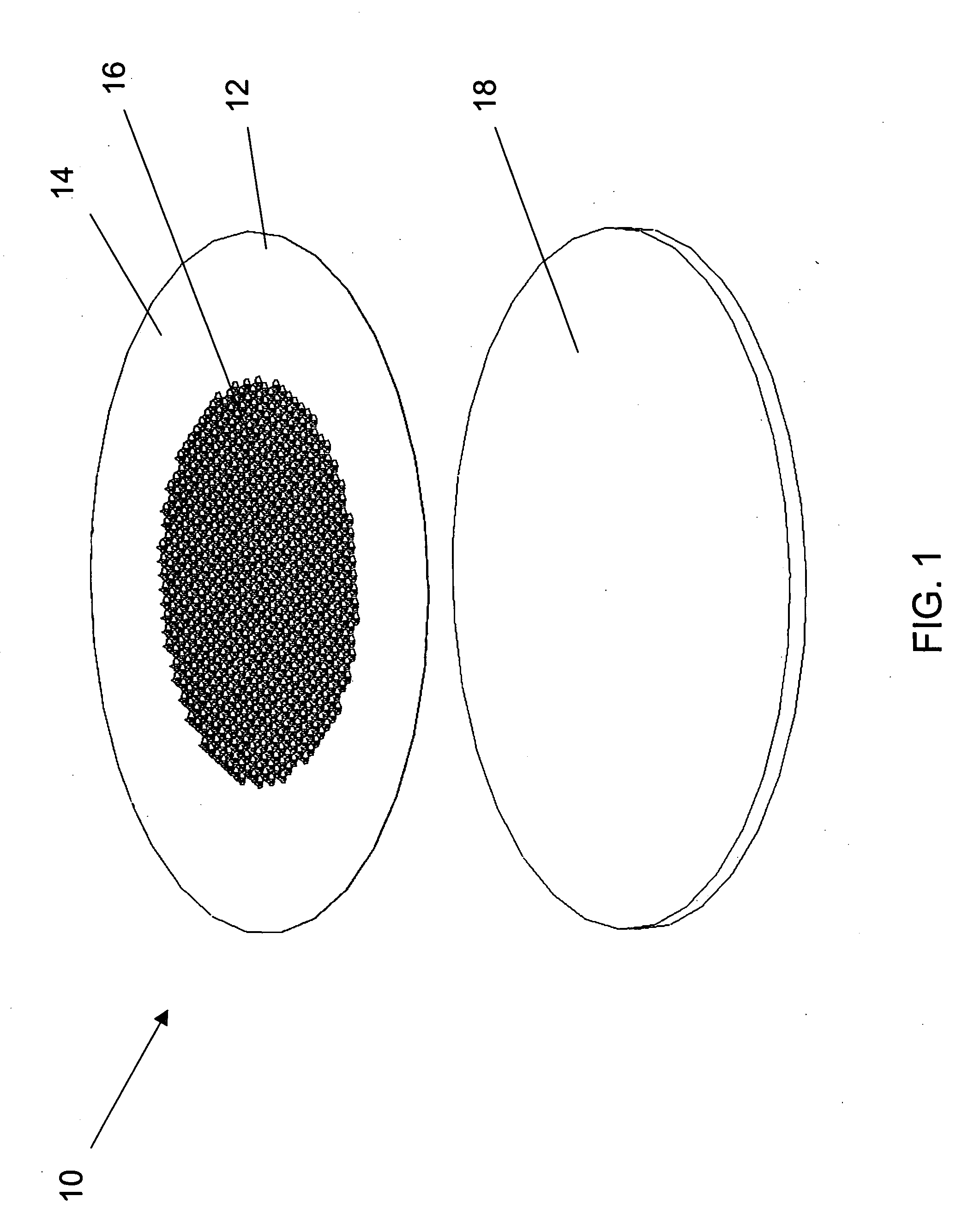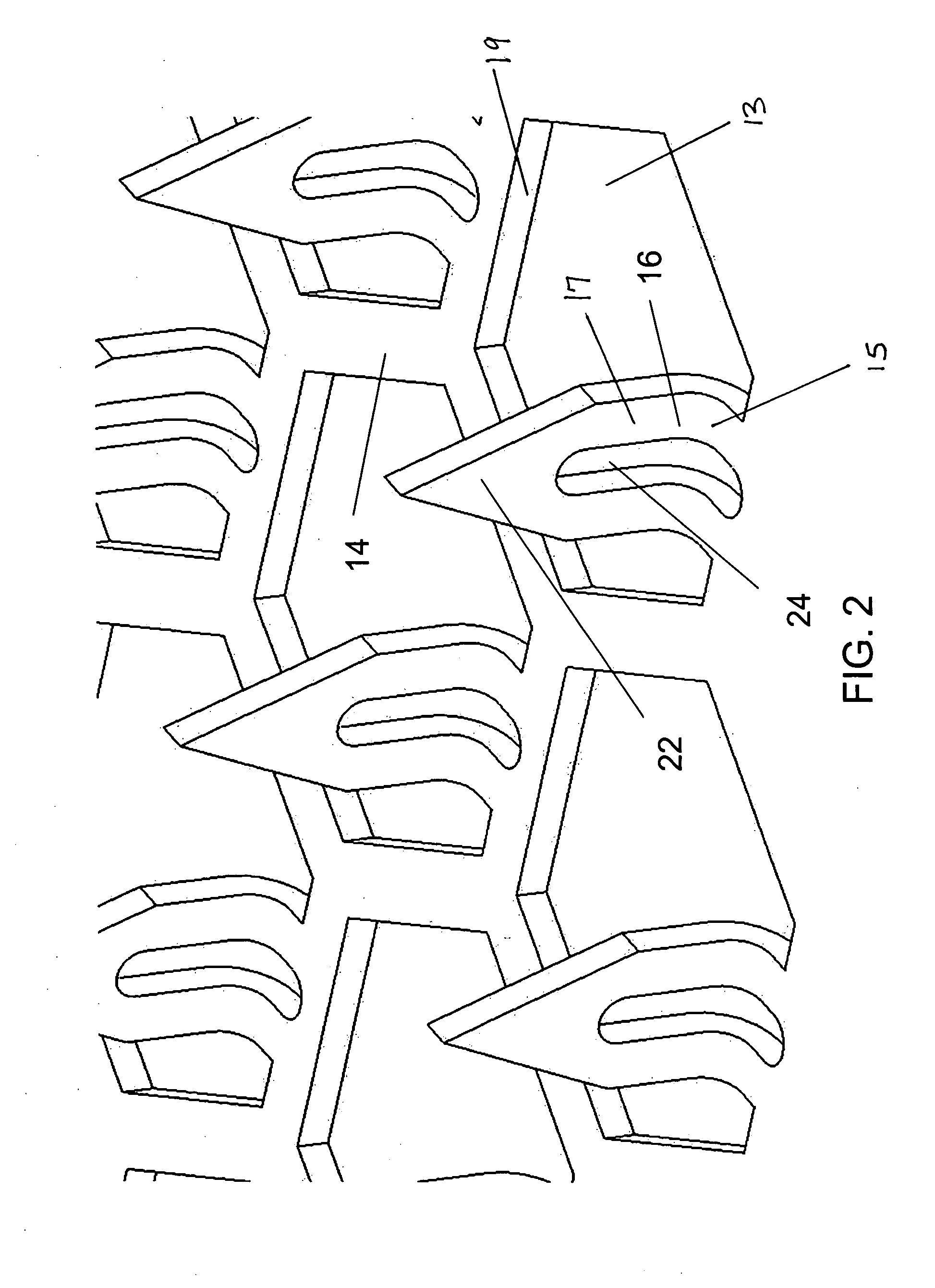Microneedle array, patch, and applicator for transdermal drug delivery
a technology of microneedle array and applicator, which is applied in the field of microneedle array and transdermal drug delivery, can solve the problems of ineffective oral administration of some drugs, pain and inconvenience, and conventional hypodermic needle pain and inconvenien
- Summary
- Abstract
- Description
- Claims
- Application Information
AI Technical Summary
Benefits of technology
Problems solved by technology
Method used
Image
Examples
Embodiment Construction
[0030] Improved microneedle arrays and transdermal drug delivery devices have been developed. The microneedles of the array combine the advantages of prior solid microneedles and prior microneedles with a central hollow bore, and avoid disadvantages of each. In particular, the present microneedles advantageously have both a strong, small solid tip and a channel for drug to flow through the stratum corneum and into the patient's lower skin tissues (e.g., epidermis, dermis, or subcutaneous skin layers) while the microneedle remains inserted in the patient's skin during drug delivery. Consequently, drug delivery rates can be maintained relatively constant because the created pores are kept open by the microneedles inserted into the patient's stratum corneum, and pain from insertion of the microneedles can be minimized since the tip portion of the microneedle can be made to have a smaller cross-section and sharper tip than conventional drug-coated solid microneedles or hollow microneedl...
PUM
 Login to View More
Login to View More Abstract
Description
Claims
Application Information
 Login to View More
Login to View More - R&D
- Intellectual Property
- Life Sciences
- Materials
- Tech Scout
- Unparalleled Data Quality
- Higher Quality Content
- 60% Fewer Hallucinations
Browse by: Latest US Patents, China's latest patents, Technical Efficacy Thesaurus, Application Domain, Technology Topic, Popular Technical Reports.
© 2025 PatSnap. All rights reserved.Legal|Privacy policy|Modern Slavery Act Transparency Statement|Sitemap|About US| Contact US: help@patsnap.com



